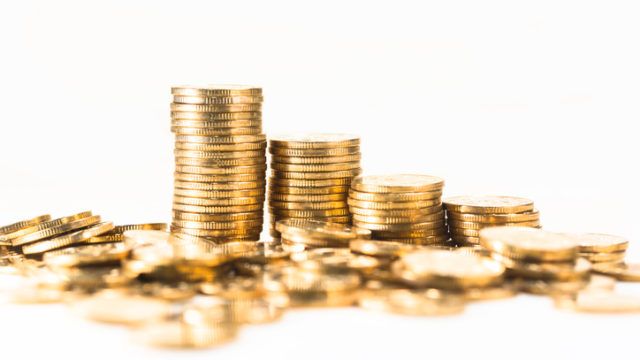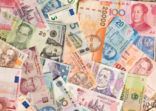“Currencies get loose through printing, gold doesn’t do that,” said Naylor-Leyland, fund manager of the Old Mutual Gold and Silver Fund, on a recent trip to Hong Kong.
“200 years ago an ounce of gold bought you a handmade suit and handmade pair of shoes, 100 years ago, it bought the same and today it buys the same. Because gold is money. Money isn’t gold. Dollars and euros are all state money that degrades according to its issuers.”
Naylor-Leyland, whose fund invests in the two metals as well as gold miners, sat down with FSA and answered some questions about gold investing.
How do interest rates impact on gold?
It’s the relationship between rates and inflation is what matters. If inflation is at 4% and interest rates 2%, then you’re losing 2% per year holding cash. Then gold goes up. If it’s the other way around, with interest rates higher than inflation, then gold goes down because the paper [cash] is delivering you a real return. You are accumulating purchasing power.
Earlier this year, we realized that we were not going to get the six rate hikes that we were promised. It was the promise of rate hikes that made the dollar go up for three years because we were told we’d be making 2-3% holding cash. When the rate hikes did not come as promised, we lose money holding cash. When the US dollar loses purchasing power, investors will buy gold and gold goes up.
The market believed what they were told by the Fed about 4-6 rate hikes. But if they were told the truth, that there would be zero rate hikes, people would just buy physical assets.
Is an accelerated schedule for interest rate hikes bad for gold?
No. [Capital flows into] gold are about the relationship between interest rates and inflation. [Head of the US Federal Reserve] Janet Yellen has explicitly said that the Fed is not going to be hiking rates as fast as inflation comes through. [By saying that], she just told the market explicitly that gold will go up.
So even though the Fed [effectively] has told you that gold is in a bull market, people refuse to believe it because they want to believe in higher interest rates.
Say inflation is 2%. That would mean we would need six rate hikes to get to a 2% interest rate. Do you really think the Fed would deliver six rate hikes? It cannot happen.
Fifty basis points would take us to a one percent interest rate. Or take us from a [hypothetical] 5% interest rate to 5.5%. That’s the same move – two rate hikes. But in one instance, it is a 10% move (5% to 5.5%). In the other instance it is a 100% move. Raising rates from a low base is nothing like raising rates from 5% to 5.5%. The idea that sending interest rates up 400% or something from here when the central banks have done nothing but lend loose credit and misallocate capital for years means it cannot happen.
What drives the price of gold?
Gold doesn’t have a price. Gold prices currencies and not the other way around. Physical gold is not exposed in any way to dollar gold prices unless you live in the US. But the market doesn’t know this. So you hear people saying gold is disappointing, but they are talking about the US dollar gold price. If you own sterling gold, it’s not disappointing. It’s an fx cross. If I’m based in London, I’m based in the sterling gold price. Gold priced in sterling is up 33% this year.
Currency movement does impact mining companies. That is completely different. If you are invested in a mining company that mines in Mexico and it sells in US dollars, then costs are in pesos and revenues are in dollars. For Mexican companies, the peso collapsed vs the US dollar, which means margins are expanding. But with physical gold you are only ever exposed to your own currency rate. The cross rate.
If you ran our gold fund’s performance in five different currencies you would have five very different results.
What is the biggest risk to your fund?
The only thing that would drive gold down on a meaningful basis is if rates outpace inflation. Not keep up with inflation, but go above it. So over 12-18 months, the single biggest risk would be if we get six rate hikes and no inflation, meaning purchasing power actually goes up because you’re receiving a real return on credit notes.
It is always about that relationship [rates and inflation] and nothing else. This is the hidden secret of the financial system that central banks don’t want you to know. Also that is why central banks themselves buy each others’ gold and not each others’ credits. Since central banks have been printing money, they have been buying gold.
This is so important to understand. If you don’t, you accept the illusion of the financial system. Gold is money, the rest is credit. Credit can accumulate purchasing power, but when an issue it into existence, its price goes down.
But I expect currencies to continue to degrade, particularly as they issue more and spend more.
















